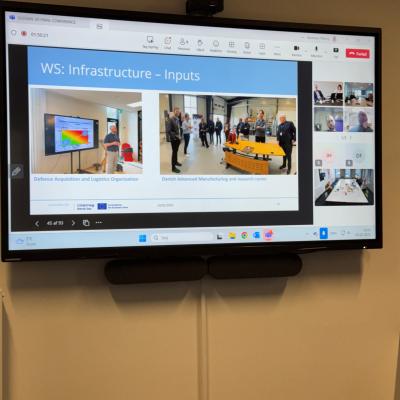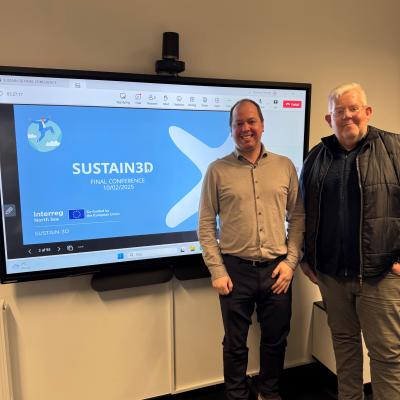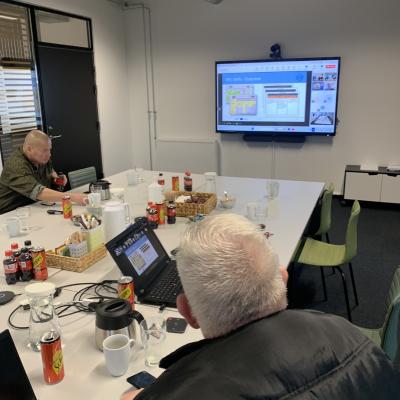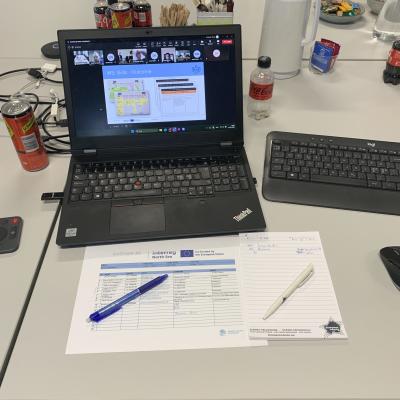In a streamlined session marking the closing conference of the SUSTAIN3D project, key stakeholders gathered to discuss the future of additive manufacturing in Europe. The event highlighted progressive steps towards integrating 3D printing into small and medium-sized enterprises (SMEs) and emphasized the importance of local stakeholder networks to foster both innovation and strategic growth.
In a streamlined session marking the closing conference of the SUSTAIN3D project, key stakeholders gathered to discuss the future of additive manufacturing in Europe. The event highlighted progressive steps towards integrating 3D printing into small and medium-sized enterprises (SMEs) and emphasized the importance of local stakeholder networks to foster both innovation and strategic growth.
Key Highlights:
- Strategic Outlook: Jesper Heltzen outlined the crucial role of small-scale projects in driving synergy within the current program and previewed forthcoming consultations aimed at shaping future initiatives.
- Addressing SME Challenges: Discussions focused on overcoming barriers such as the slow pace of political and commission support, skill shortages, and infrastructural hurdles in adopting advanced 3D printing technologies.
- Local Action Plans: The French local action plan, presented by Amandine Caux and Stephan Verin, demonstrated collaborative efforts to increase the initiative's visibility and address post-pandemic challenges.
- Educational Integration: Emphasis was placed on merging STEM educational opportunities with practical pilot projects to ensure that technical expertise evolves alongside emerging technologies.
- Hard and Soft Skills: During a thematic workshop in Belgium, Kevin Sel highlighted the need to balance both hard skills and soft skills in additive manufacturing, reinforcing the importance of holistic training frameworks.
- Exploring new applications: Amber Fiechter introduced plans to develop three pilot projects, including workshops and a master class, aimed at exploring new applications of 3D printing and driving further innovation.
The conference encapsulated a clear vision for the future of additive manufacturing—one that leverages localized innovation and international collaboration to transform challenges into opportunities for growth across Europe.
The SUSTAIN3D project is a shining example of how cross-border collaboration can elevate technological innovation and empower stakeholders. Throughout the project, partners from various countries have not only shared their expertise but also actively visited each other’s facilities, exchanged insights, and immersed themselves in diverse cultural perspectives. This vibrant exchange of ideas has led to:
Enhanced Innovation: Learning from international best practices has resulted in groundbreaking approaches in additive manufacturing, allowing each partner to integrate new techniques and technologies into their local strategies.
Strengthened Partnerships: The consistent engagement across borders has fostered a deep sense of mutual trust and respect among project partners. This strong network paves the way for future collaborations and ensures that challenges are tackled collectively, leveraging the strengths of each region.
Accelerated Knowledge Transfer: By exchanging hands-on experiences and real-world insights, partners have not only tackled the immediate challenges of SME adoption but also laid the groundwork for long-term strategic alliances. This knowledge sharing has been pivotal in shaping initiatives, pilot projects, and educational programs that are vital for the sector's growth.
Looking forward, the collaborative spirit that has been nurtured within the project will continue to be a key enabler for success. The established partnership model is anticipated to drive further innovation, with joint projects and co-designed initiatives that transcend national boundaries. This transnational collaboration is proving to be instrumental in shaping a resilient and dynamic future for additive manufacturing across Europe.




